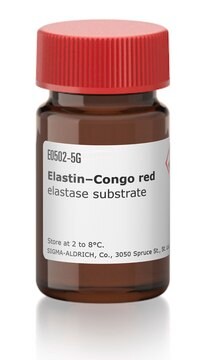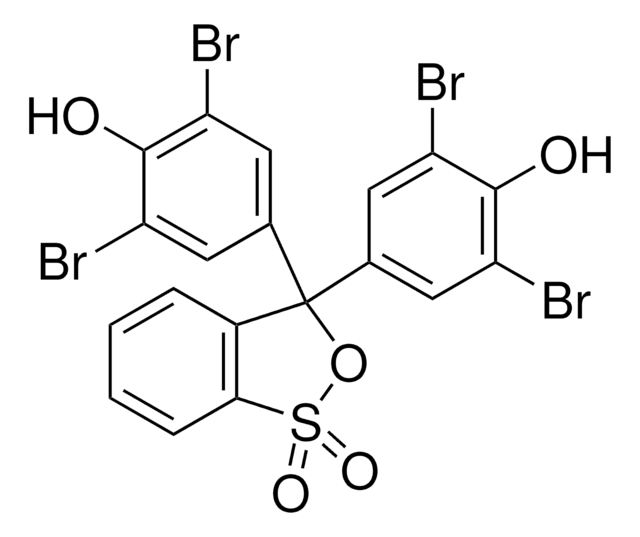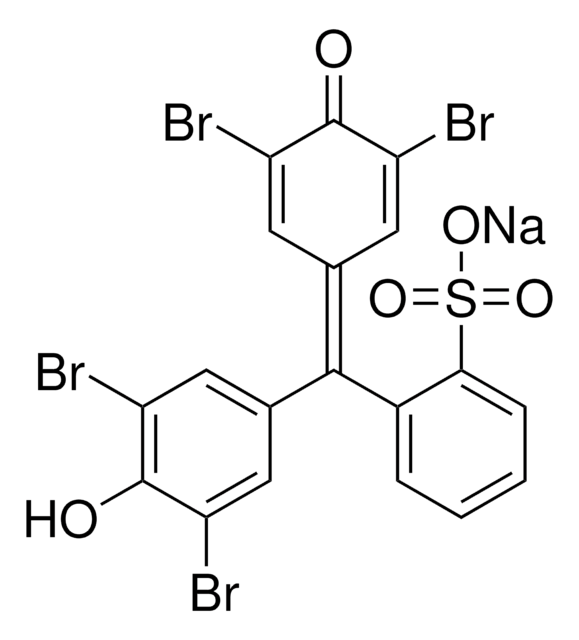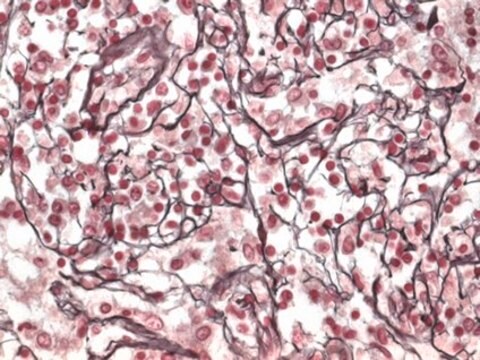1.01641
Congo Red staining kit
suitable for detection, according to Highman
Faça loginpara ver os preços organizacionais e de contrato
About This Item
Código UNSPSC:
41116124
NACRES:
NA.41
Produtos recomendados
Características
according to Highman
Nível de qualidade
IVD
for in vitro diagnostic use
dilution
(for human-medical cell diagnosis)
aplicação(ões)
clinical testing
diagnostic assay manufacturing
hematology
histology
detection
temperatura de armazenamento
15-25°C
Categorias relacionadas
Descrição geral
The Congo Red staining kit - Kit for the detection of amyloid acc. to Highman, is used for human-medical cell diagnosis and serves the purpose of the histological investigation of sample material of human origin for example histological sections of e. g. the kidney, the intestine, or the liver.
This Congo red staining kit contains all the reagents necessary for staining amyloid in histological tissues. Amyloid is a homogenous structure made up of protein fibrils (each between 8 and 15 nm in diameter) that can be stained eosinophilically, which e. g. in the case of amyloidosis forms deposits in the intercellular space. All deposits of amyloid contain similar protein fibrils that are resistant to the body′s natural defence mechanisms and that once they have formed cannot be eliminated.The Congo red staining principle is based on the formation of hydrogen bridge bonds with the carbohydrate component of the substrate. Congo red is an anionic dye and is capable of depositing itself in amyloid fibrils, which then exhibit a conspicuous dichroism under polarized light. The tissue stained with Congo red appears orange-red under the transmitted-light microscope; under polarized light, however, the amyloid deposits show up as brilliant green double-refraction images against a dark background. Other structures also stained by Congo red, e. g. collagen, however are not visualized under polarized light. Staining may be technically difficult when the paraffin sections used are too thin (<5 μm) or when the tissue is too strongly over-stained.
The kit is sufficient for up to 50 applications. This product is registered as IVD and CE marked. For more details, please see instructions for use (IFU). The IFU can be downloaded from this webpage.
This Congo red staining kit contains all the reagents necessary for staining amyloid in histological tissues. Amyloid is a homogenous structure made up of protein fibrils (each between 8 and 15 nm in diameter) that can be stained eosinophilically, which e. g. in the case of amyloidosis forms deposits in the intercellular space. All deposits of amyloid contain similar protein fibrils that are resistant to the body′s natural defence mechanisms and that once they have formed cannot be eliminated.The Congo red staining principle is based on the formation of hydrogen bridge bonds with the carbohydrate component of the substrate. Congo red is an anionic dye and is capable of depositing itself in amyloid fibrils, which then exhibit a conspicuous dichroism under polarized light. The tissue stained with Congo red appears orange-red under the transmitted-light microscope; under polarized light, however, the amyloid deposits show up as brilliant green double-refraction images against a dark background. Other structures also stained by Congo red, e. g. collagen, however are not visualized under polarized light. Staining may be technically difficult when the paraffin sections used are too thin (<5 μm) or when the tissue is too strongly over-stained.
The kit is sufficient for up to 50 applications. This product is registered as IVD and CE marked. For more details, please see instructions for use (IFU). The IFU can be downloaded from this webpage.
Aplicação
Kit for the detection of amyloid acc. to Highman
Nota de análise
Suitability for microscopypasses testAmyloidpink to red; in polarized ligt green metachromasisNucleidark blueConnective tissuelight red
Palavra indicadora
Danger
Frases de perigo
Declarações de precaução
Classificações de perigo
Carc. 1B - Eye Irrit. 2 - Flam. Liq. 2 - Met. Corr. 1 - Skin Irrit. 2
Código de classe de armazenamento
3 - Flammable liquids
Certificados de análise (COA)
Busque Certificados de análise (COA) digitando o Número do Lote do produto. Os números de lote e remessa podem ser encontrados no rótulo de um produto após a palavra “Lot” ou “Batch”.
Já possui este produto?
Encontre a documentação dos produtos que você adquiriu recentemente na biblioteca de documentos.
Os clientes também visualizaram
Nossa equipe de cientistas tem experiência em todas as áreas de pesquisa, incluindo Life Sciences, ciência de materiais, síntese química, cromatografia, química analítica e muitas outras.
Entre em contato com a assistência técnica











